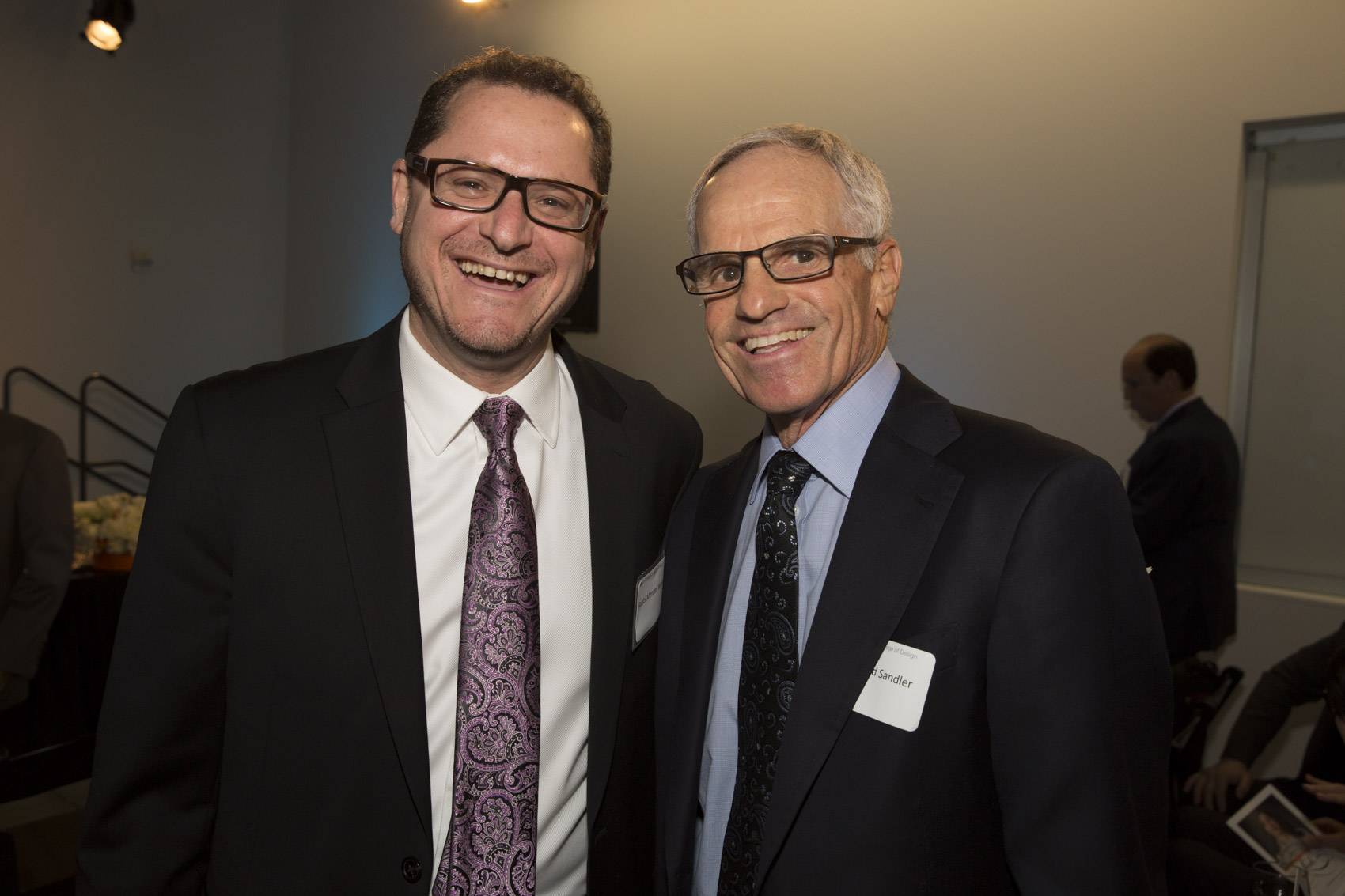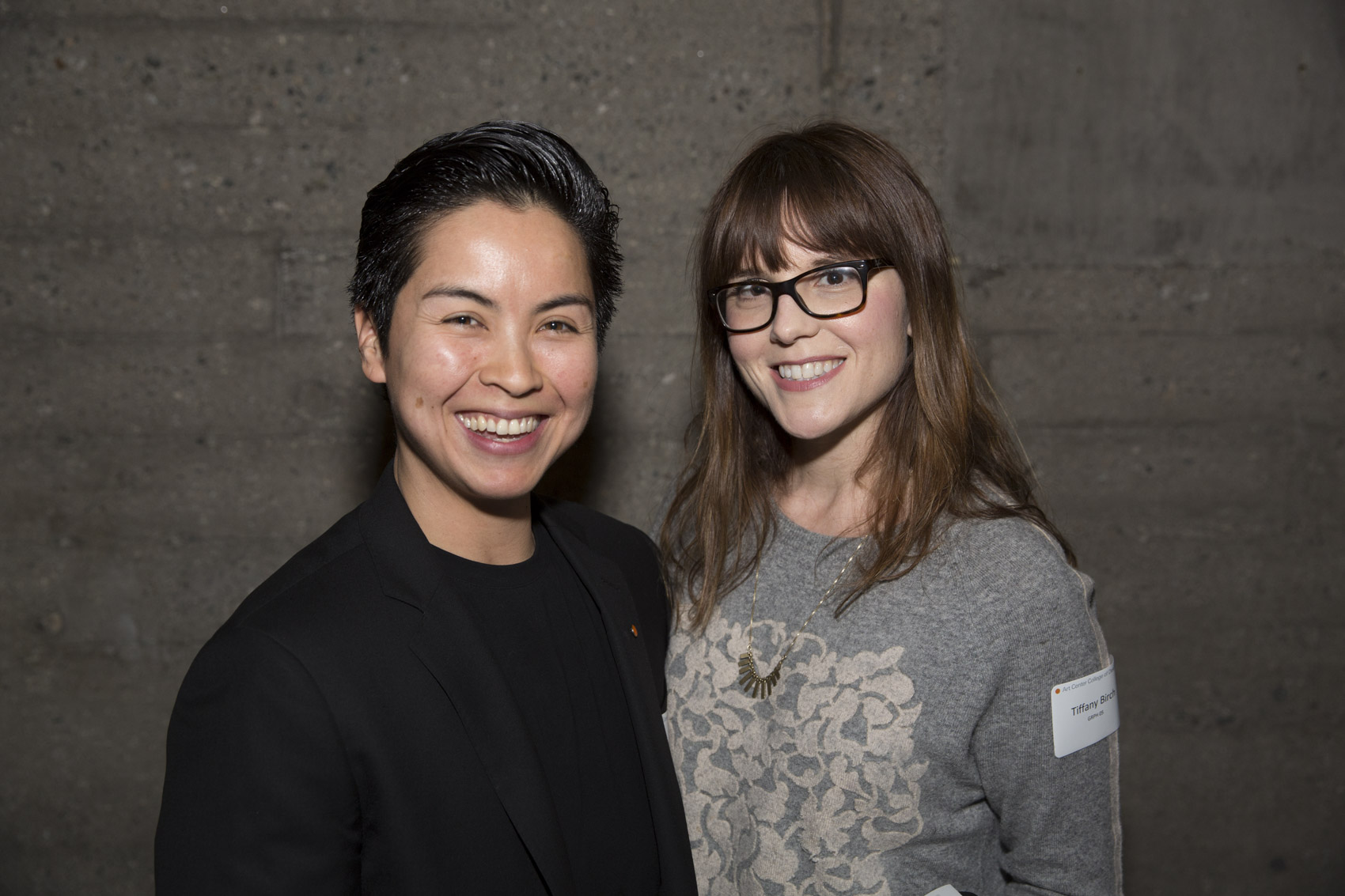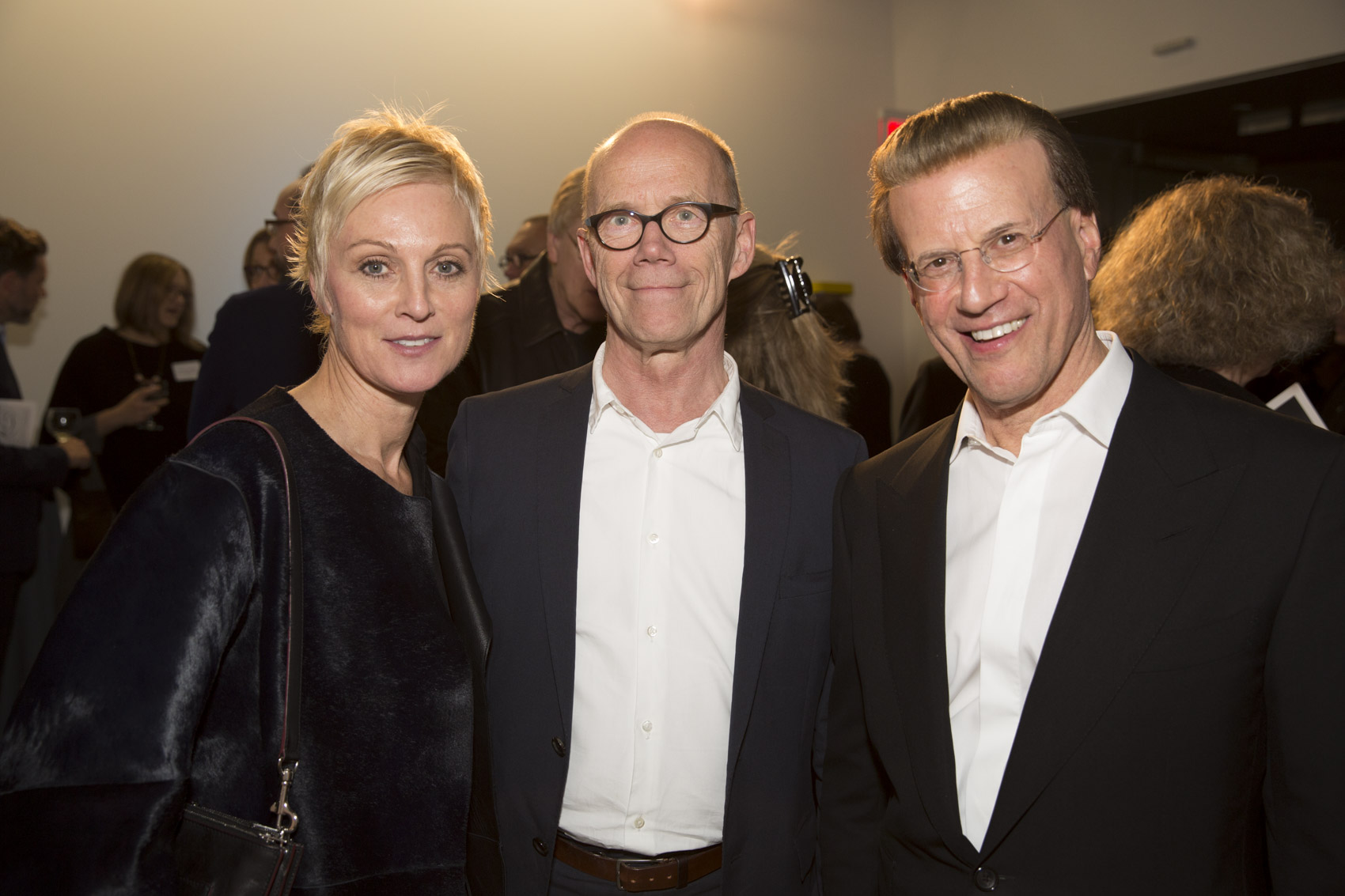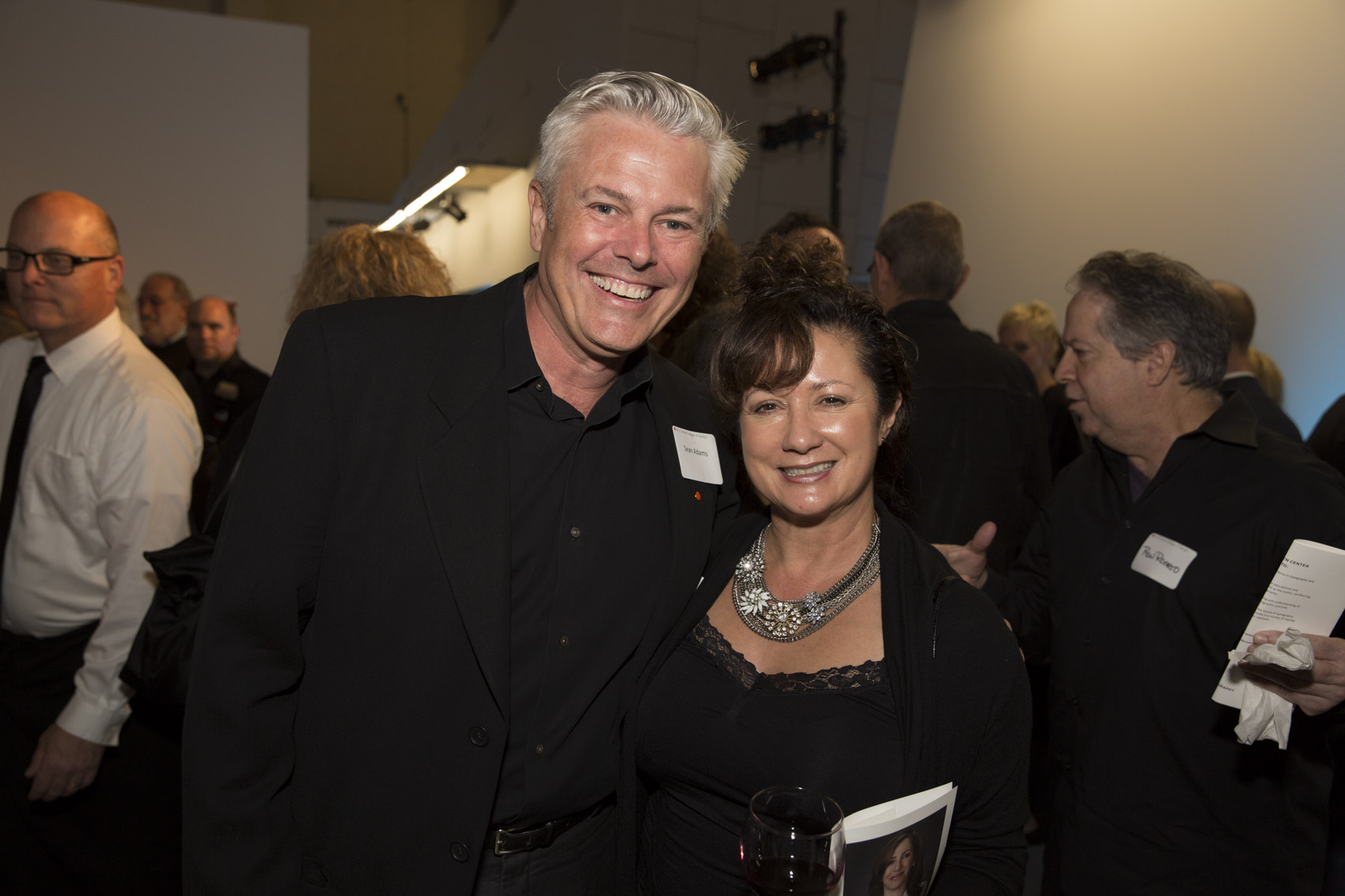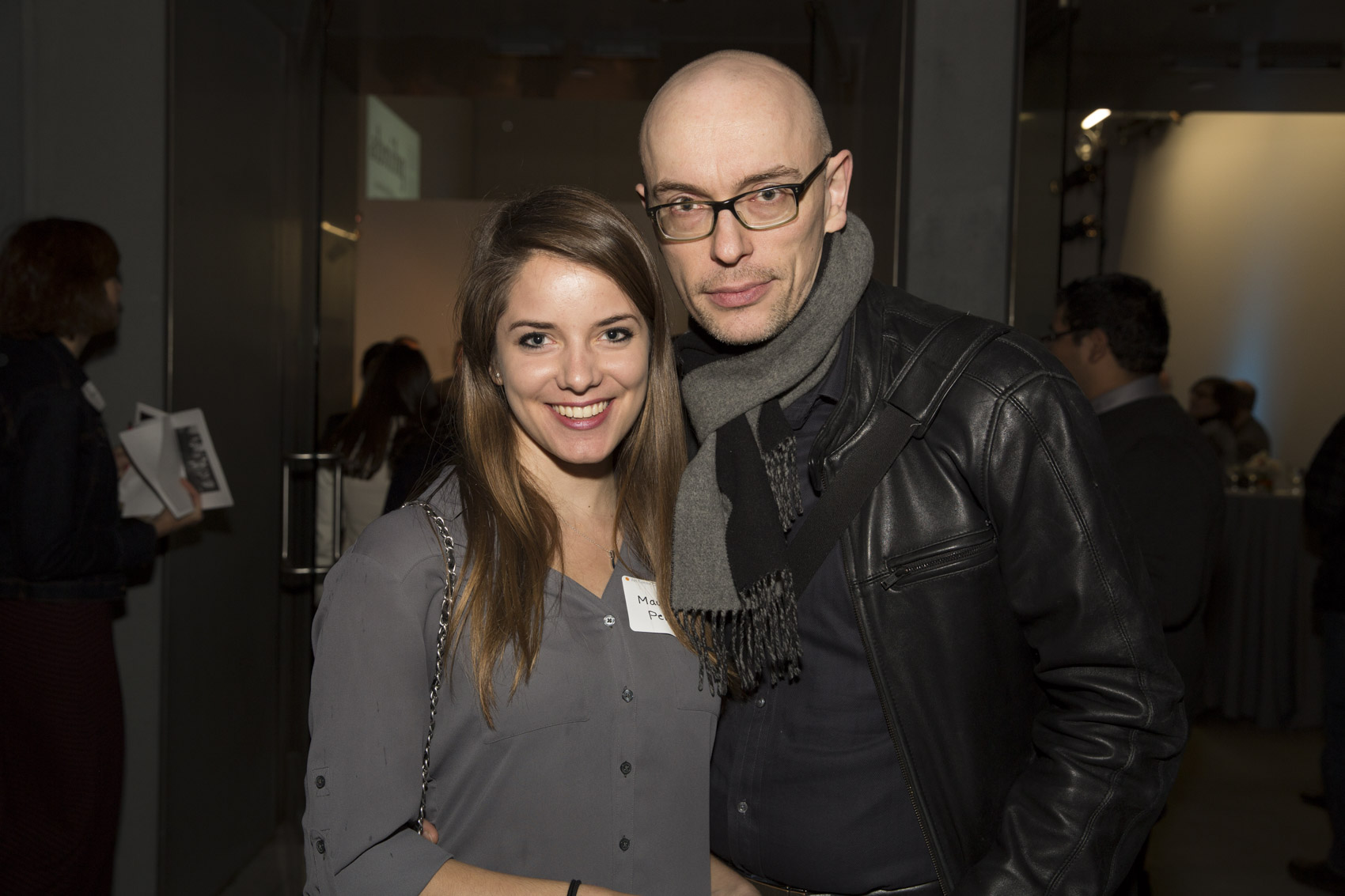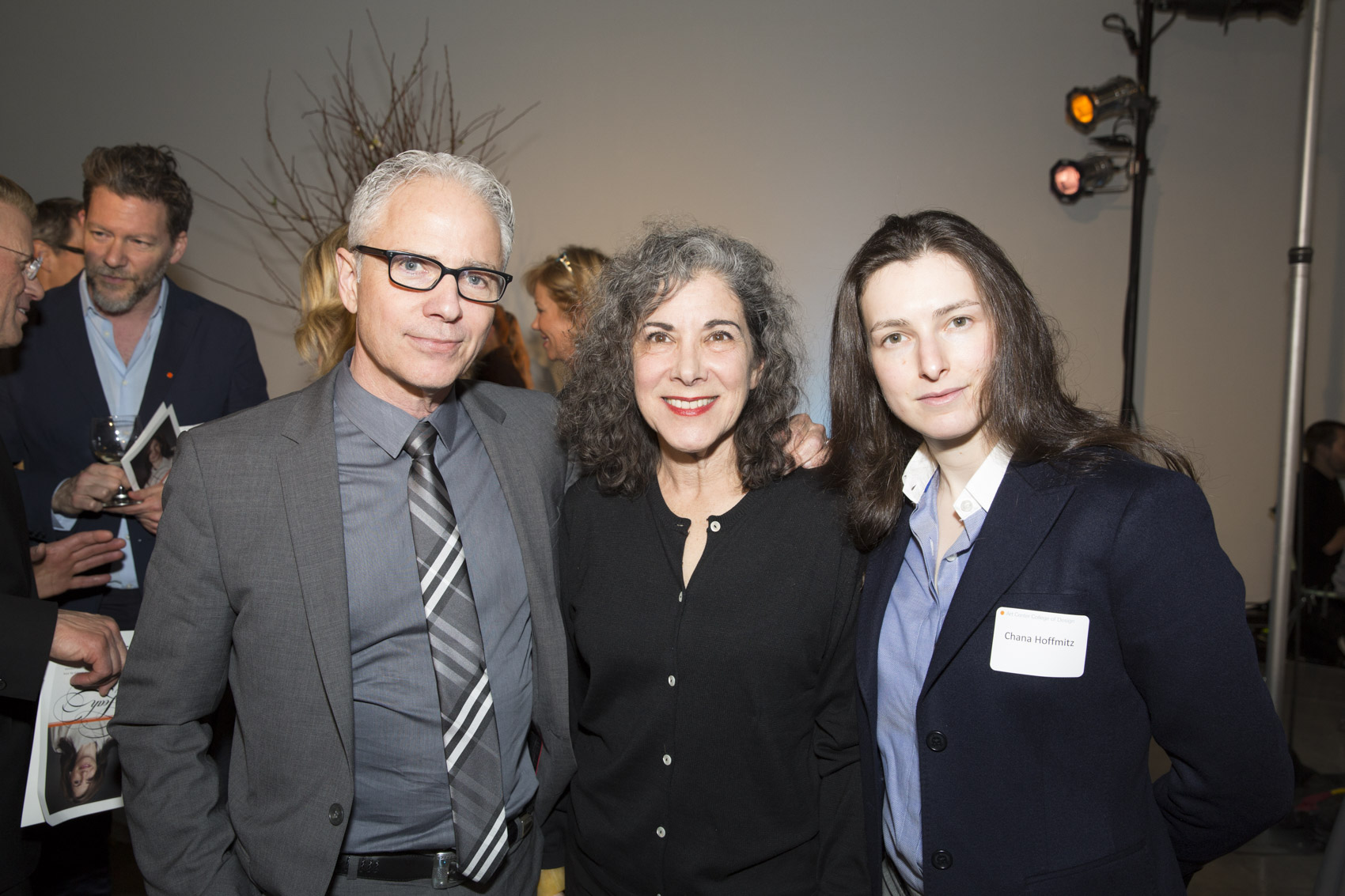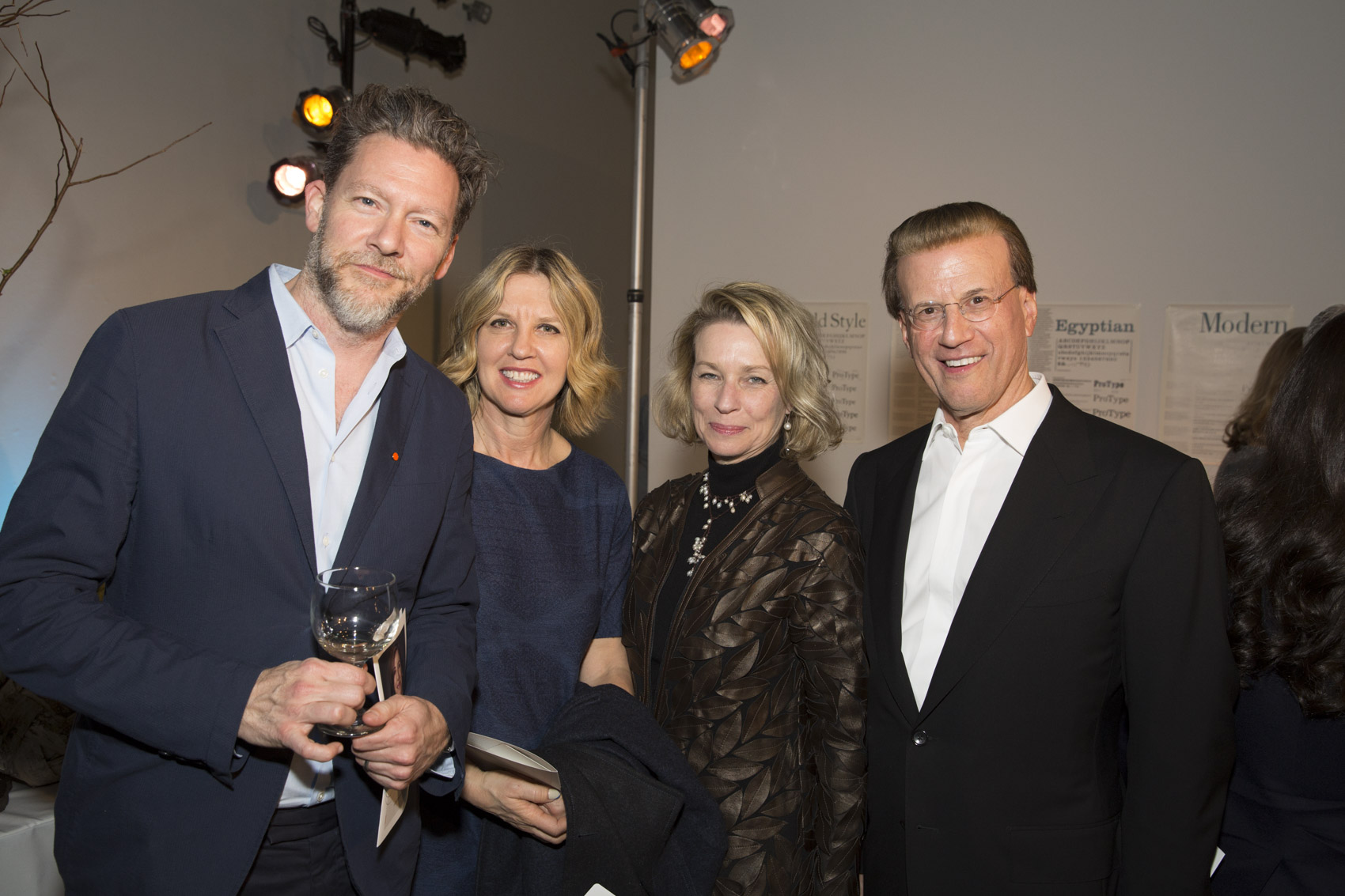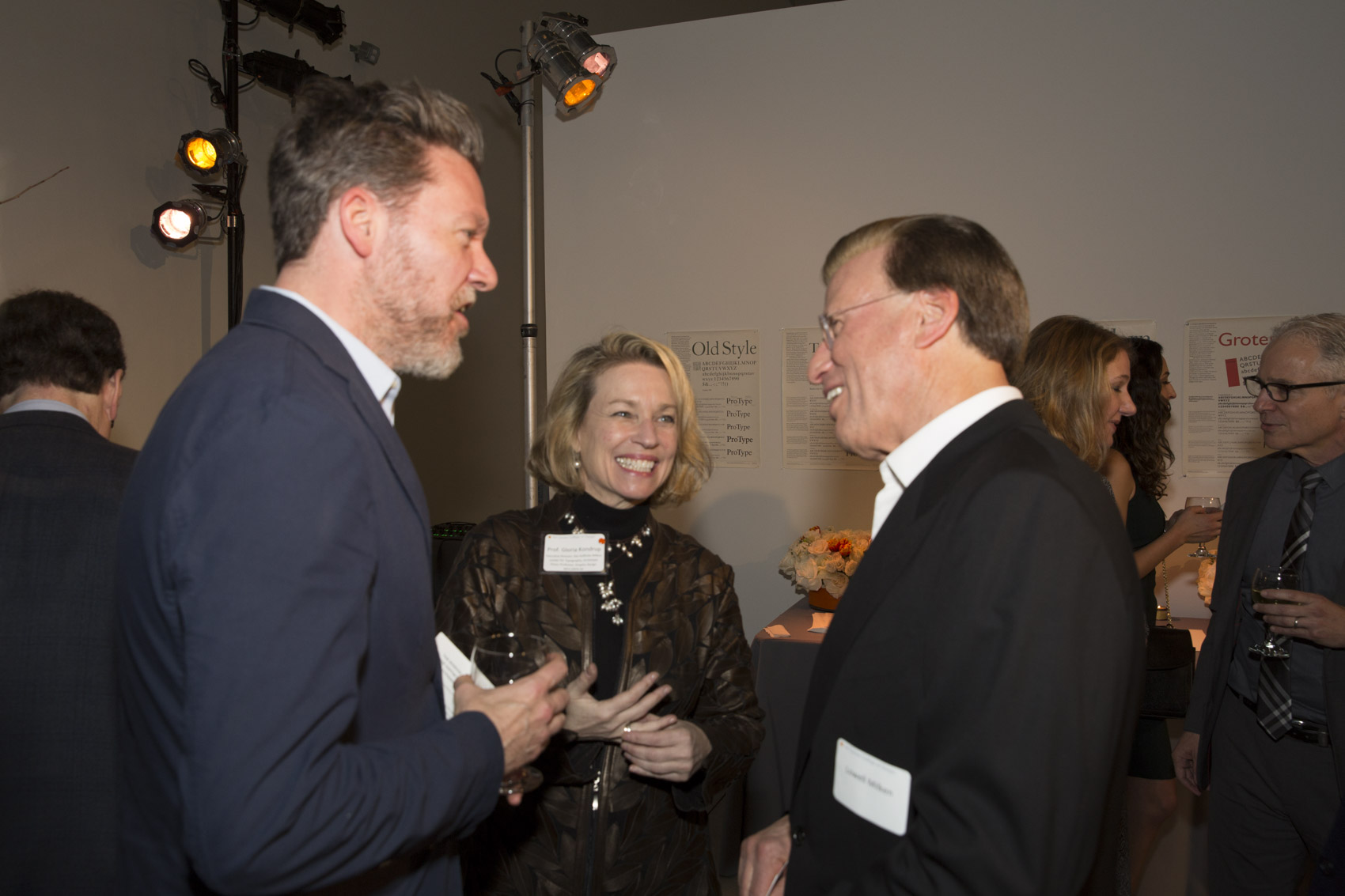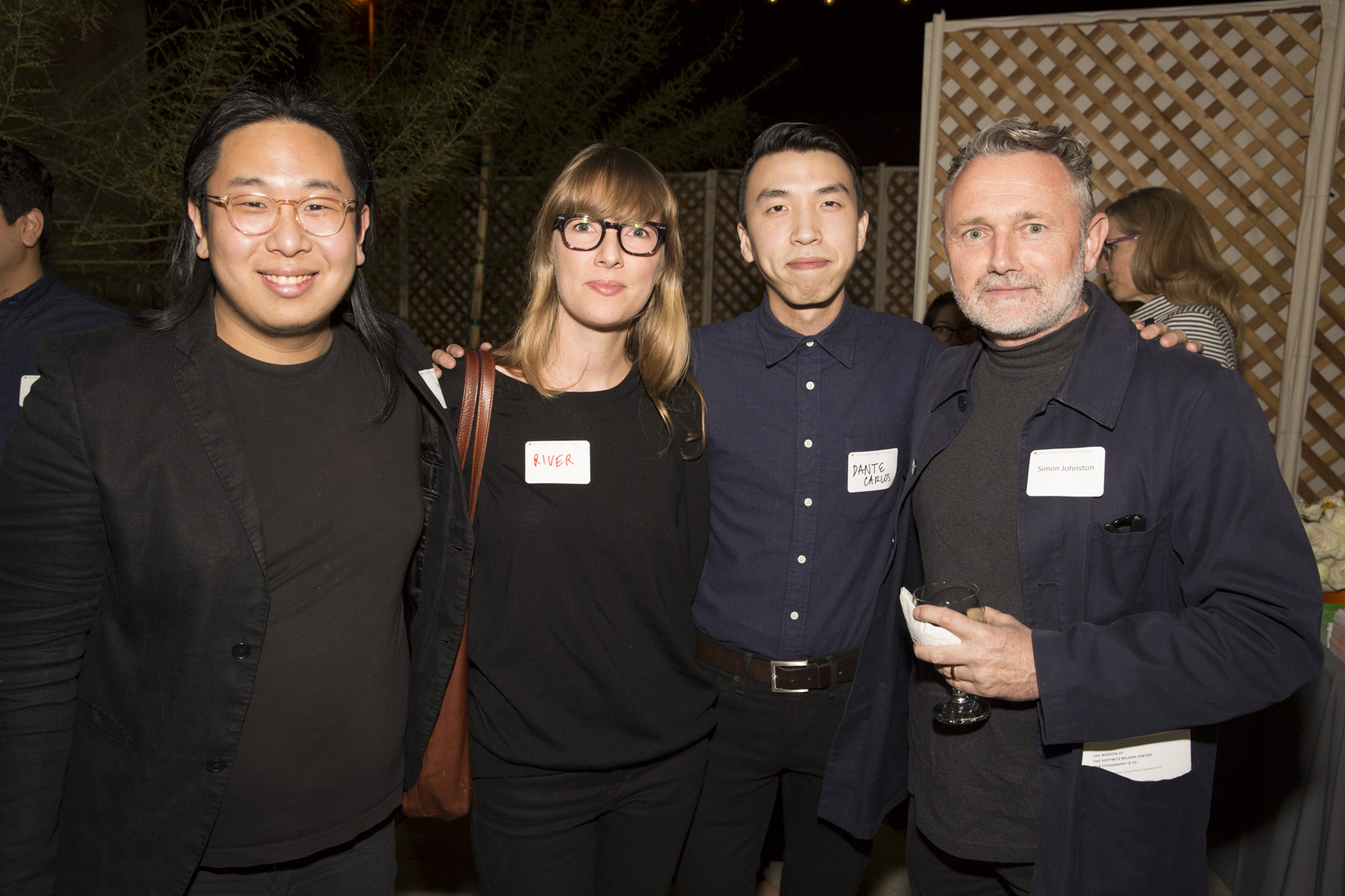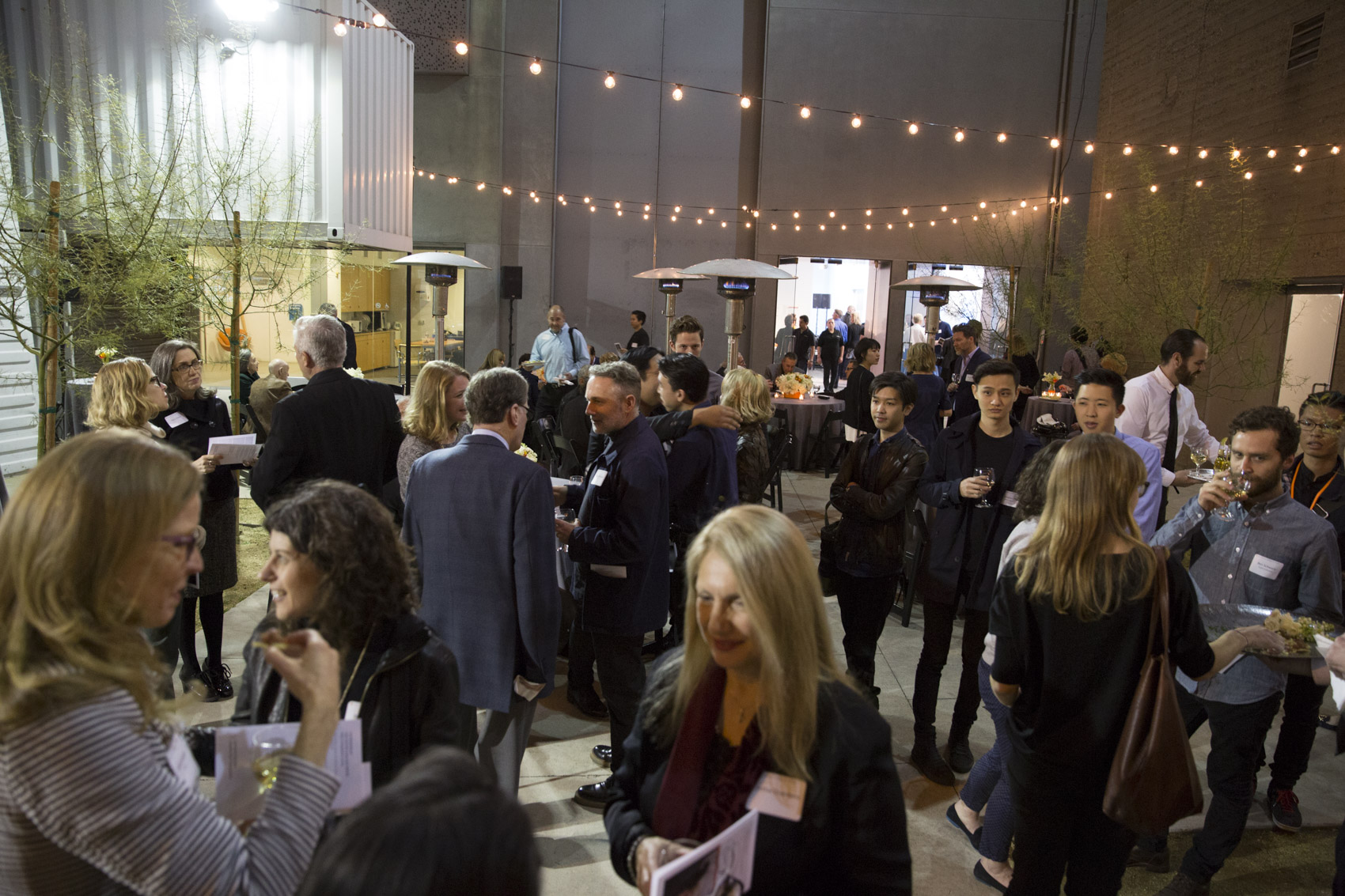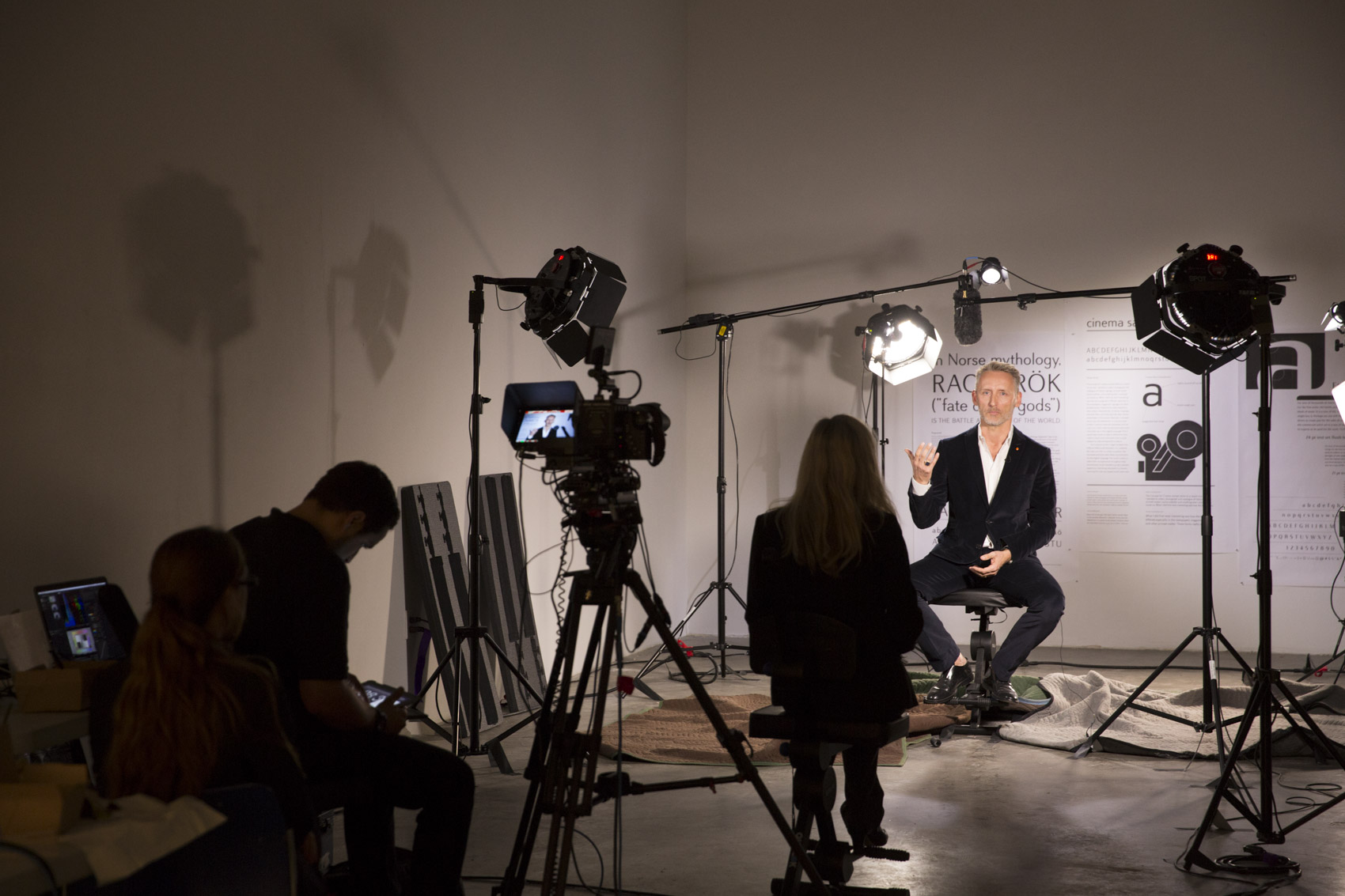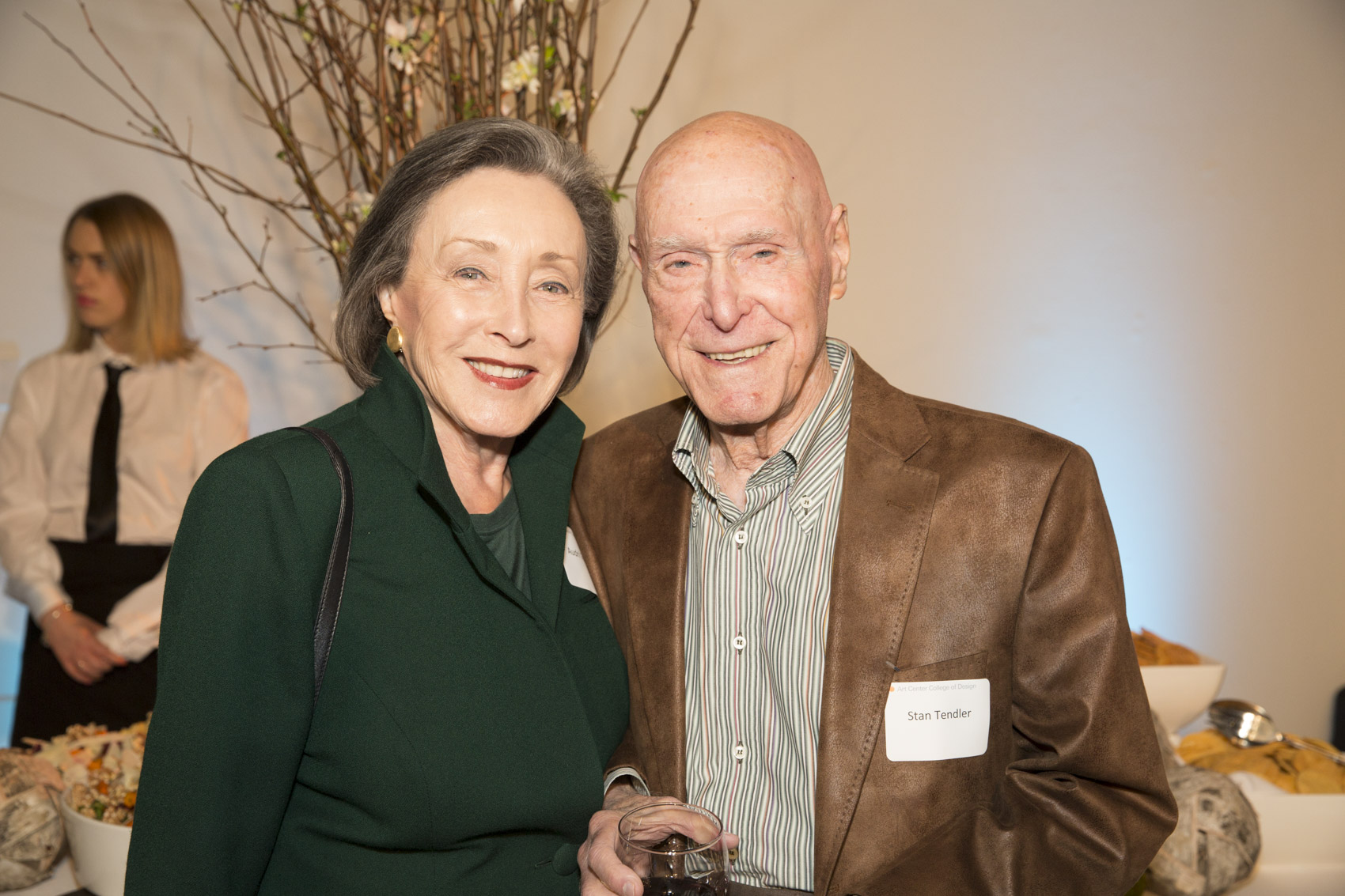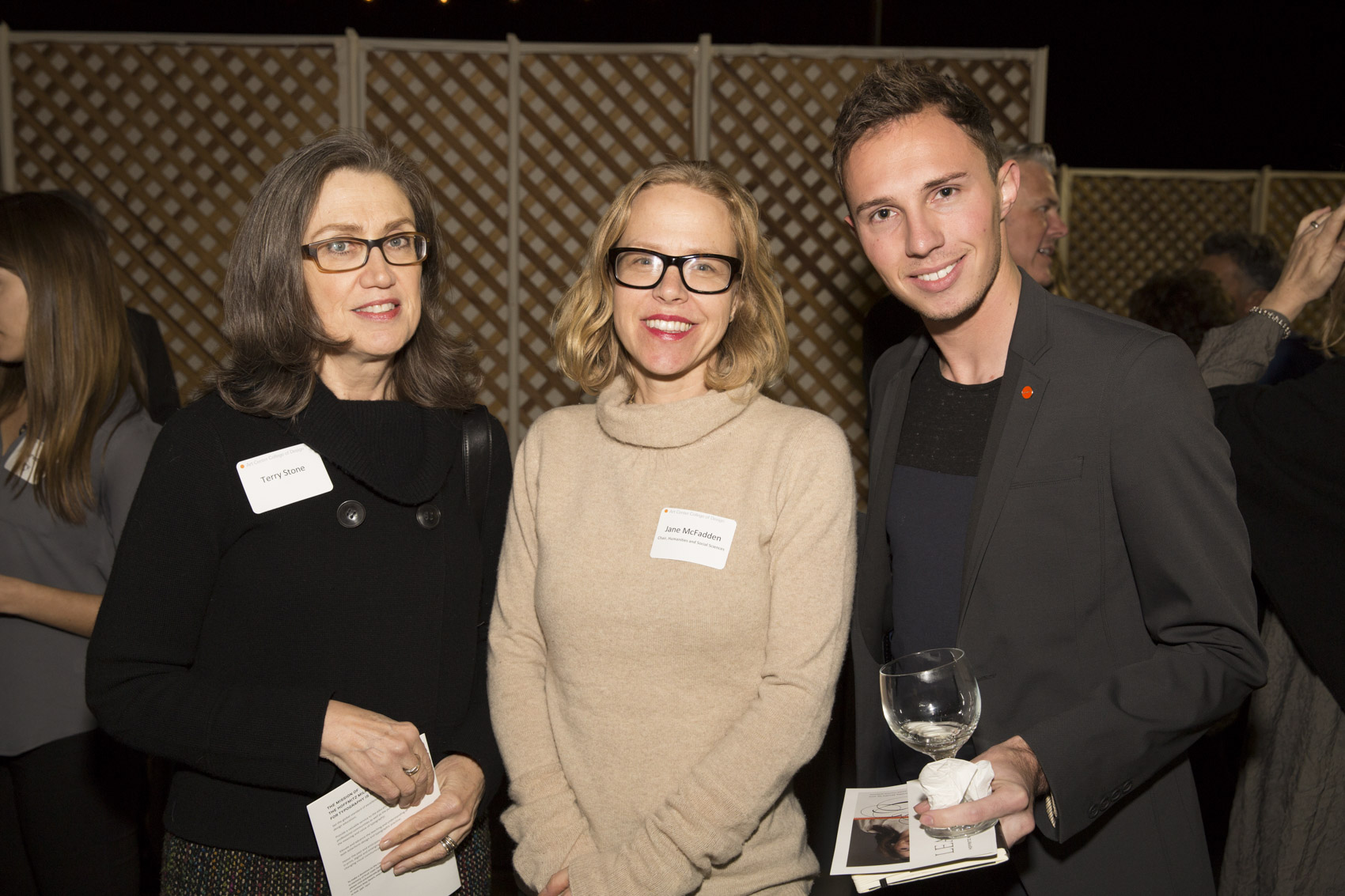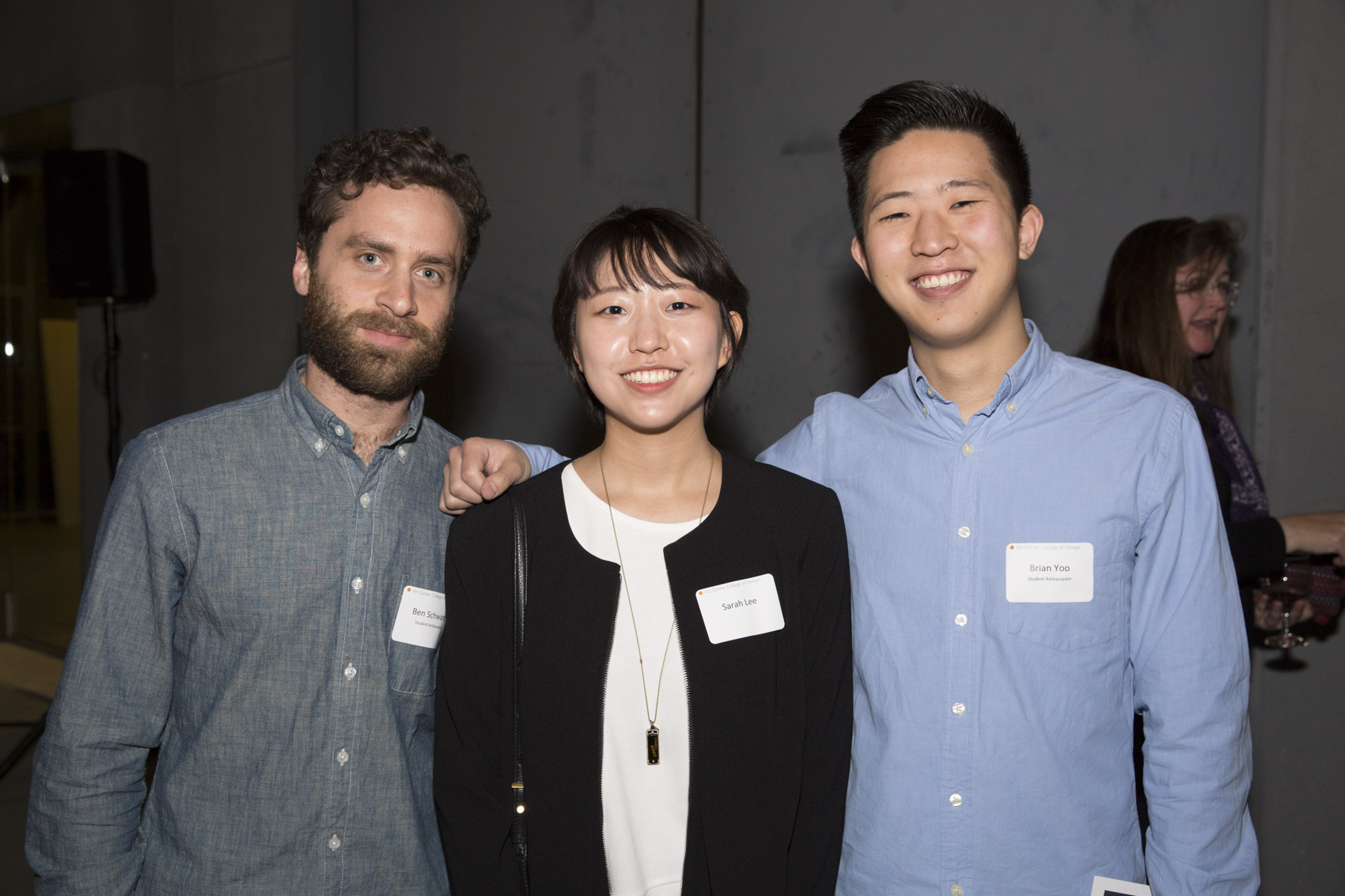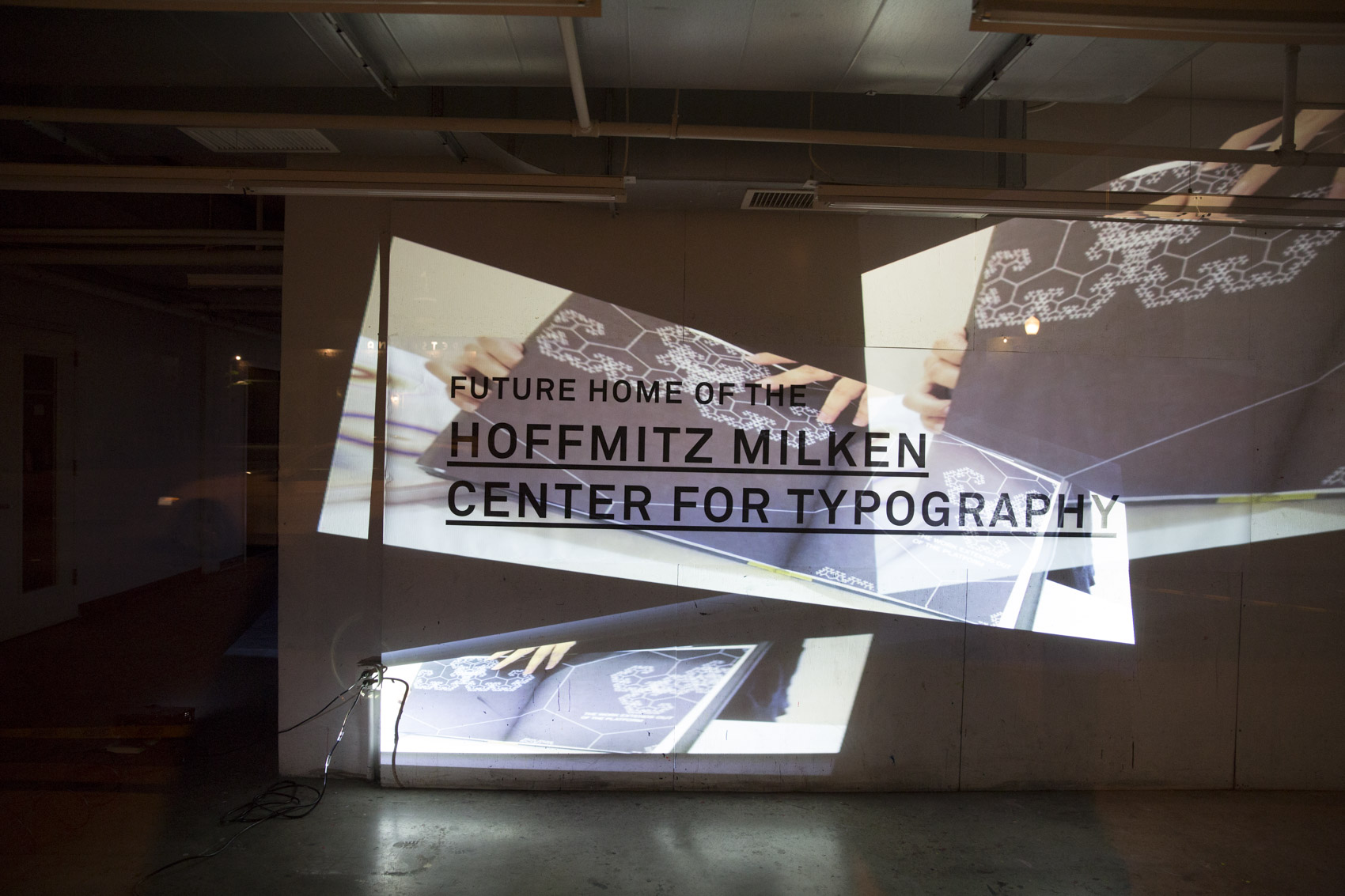Laughter, tears and, most of all, love was in abundance last Thursday evening, when more than 200 close friends and family gathered in Art Center’s Wind Tunnel Gallery to remember the extremely perceptive, bigger than life, impressively precise, brutally honest and encouragingly supportive Leah Toby Hoffmitz Milken, who passed away in October after battling a rare form of brain cancer.
President Lorne M. Buchman described Leah’s teaching as “the spine,” the core, the fundamental center for the design practice of her students. “Letterforms are a significant means through which human knowledge is conveyed and made precise, he explained. “Leah gave us the gift of knowing language, of seeing the visual word, in its most precise and exacting form. And from that came a release, a creativity of communication that can only enhance our experience as human beings.”
In her honor, Leah’s husband, Lowell Milken and the Lowell Milken Family Foundation made a $2 million gift to the College to establish the Hoffmitz Milken Center for Typography to advance the research, teaching and understanding of letterform design and typography.
“It was a dream come true,” said Buchman. “At its core, this Center resonates with the best of who Leah was. She left us not only with a deep and abiding past but with a promise for a future of continued discovery, creativity, research, excellence – and that promise is in our new Center for Typography.”
Recently appointed creative director and faculty liaison of the Center, Simon Johnston, describes typography as language made visible, “the spine that runs through the body of graphic design practice.”
Many of the alumni on hand shared how, with Leah’s help, they discovered typography as the visual translation of voice. “A voice that can shout, a voice that can whisper, a voice that is scientific or poetic; the voice made visual, tangible, creditable and permanent,” Buchman explained. “As we explore the mission of the Center to set the global standard of excellence in typography and design education, let us do so in the spirit of Leah’s voice continuing to sound, to be made visual, to shout her brilliance, to whisper her profound wisdom, to make real both her scientific precision and the poetry of her imagination. We have a task ahead of us to help make it all tangible, creditable, and permanent. And we are profoundly grateful to Lowell that the power of this great woman will find continued life in our new Center.”
“Our success will be the echo of her life and passion,” said Gloria Kondrup, who will serve as executive director of the Center for Typography.
“She picked me up at the airport in her VW Rabbit with her LTTRFRM vanity license plate,” said Erik Spiekermann, pre-eminent authority on typography, who credited the impeccable lettering artist with introducing him to Art Center, Los Angeles and his business partner, Terry Irwin. Spiekermann vowed to do everything possible to make Leah proud as the Center for Typography becomes a reality.
“She had an impressive capacity for optimism,” said Terry Irwin, who’s friendship with Leah goes back more than 30 years. “She had the determination to surmount any obstacle. She juggled challenges like a short order cook and 99.9% of the time, she produced beautiful resolutions.”
“Leah was a rock to many people,” she continued. “Fiercely loyal to her family and friends who she looked after like a lioness. She danced with complexity, was quick witted, fast talking and could charm the socks off anyone.”
At a cocktail party, Irwin recalled, Leah boldly proclaimed she was the original Princess “Leah” when chatting with Star Wars cast member Carrie Fisher who, Irwin said was not amused.
“A talented researcher, a master with a deep knowledge of design, letterforms and letterform history,” said Irwin, who went on to quote some of the comments on RankYourProfessor.com:
“Leah is one of the gems of Art Center, she’s very challenging but fair.”
“One tough cookie, very anal but damn well worth it to take her class, she’s smart, forgiving, disciplined and one of the teachers I will never forget.”
“I had gone to school at a small town in Germany that was short of glamorous people,” said alumnus Stefan Bucher. “When your instructor breezes in to the classroom wearing high heels, you know something interesting is going to happen, we immediately hit it off.”
“Leah taught me everything,” he said. “No other teacher had a more profound and lasting effect on my day to day life.”
“To realize you don’t have a certain level of excellence, you have to reach that level of excellence,” he said. “At the time, I was too stupid to realize just how great Leah was at what she did.”
“It took me many years to figure out just what an amazing gift she was to me, to teach me in the way that she taught me and to impart so much a sense of aesthetics, balance and rhythm to me.”
“It’s probably for the best, because had I known I would have been intimidated beyond all belief.”
For years after graduation, Bucher said he would drive back up to school and ask what she thought of his work on bigger professional projects.
“I always wanted to get her blessing first. I’ll miss her.”
She made a big impression on many of the more than 4,000 students during her 20-year tenure at Art Center. Many of the speakers admitted to hearing her distinctive voice in their head on a daily basis.
“With every project, I run myself through a Leah filter,” explained alum Mike Abbink, senior creative director at The Museum of Modern Art. “And ask myself, ‘What would Leah do?’”
“I hear her everyday,” said alumnus Bryce Shawcross, graphic and lifestyle product designer at Tesla Motors, who shared how Leah would call his work “ungapatchka,” a Yiddish word meaning overly ornate, busy. His class would hear her heels walking down the slick Art Center hallways and the room would go silent before she would rip their work off the walls and tell them never to bring crap like that in again.
“She was the epitome of simple, elegant design,” said alumna Joy Liu, senior UX designer at philosophie, who described how Leah would slice up student work piece by piece with an X-Acto knife. “I like knowing I’m not the only one who hears her voice in my head.”
“When she broke you apart, she’d stick around to help put you back together again,” said alumnus Eric Hu. “For those like me who were blessed to hold a paint brush with Leah, the mark that she painted on each of us will always be there.”

